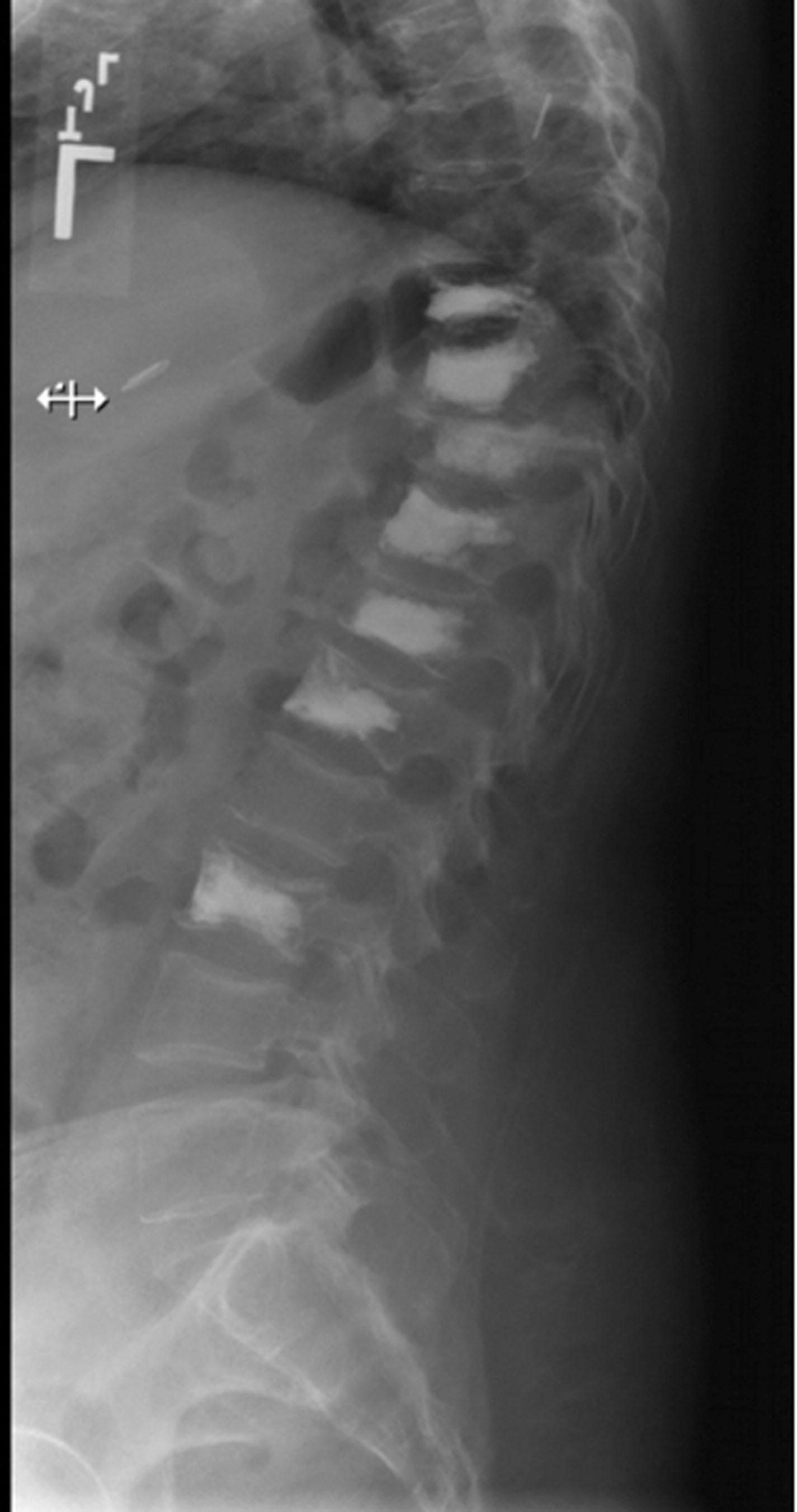Physical Address
304 North Cardinal St.
Dorchester Center, MA 02124
Vertebral compression fracture (VCF) is the most common complication of osteoporosis. Osteoporotic VCFs can lead to pain, functional disability, and decreased quality of life. These types of fractures are related to significant rates of morbidity and mortality and, with their overall high prevalence, lead to serious health and economic problems. VCFs occur in 25% of postmenopausal women over 50 years of age. This increases to 40% in those older than 80 years. Furthermore, it is estimated that VCFs affect 700, 000 patients in the United States annually. These fractures are associated with a 16% reduction in an expected 5-year survival. More than two-thirds of the patients with compression fractures are asymptomatic. When symptoms are present, abrupt onset of axial pain is the most common complaint. Most of the fractures are diagnosed between the T8 and L4 levels. Osteoporotic fractures are associated with anterior loss of vertebral height, kyphosis, and a higher risk for secondary fractures. Moreover, spinal deformity is linked to decreased pulmonary function, impaired gait, reduced mobility, and psychosocial stress. Lateral radiographs with or without anteroposterior views are usually sufficient for the diagnosis. An anterior wedge fracture is the classical radiographic finding. Further imaging is indicated in the setting of neurological deficit or instability assessment. Goals of treatment include pain relief, restoration of function, and prevention of future fractures. Pain relief is the priority when treating VCFs, especially in the older adult population. Standard nonsurgical management includes bed rest, analgesics, and bracing. Percutaneous vertebral augmentation in the form of vertebroplasty or kyphoplasty is recommended for patients with inadequate pain relief after conservative management. In the uncommon cases with neurological deterioration or instability, surgical intervention should be considered. In this chapter, we present a case of a young patient with a history of metastatic brain cancer and multiple compression fractures in the thoracic and lumbar spine.
Chief complaint: low back pain
History of present illness:
This is a 46-year-old female patient with a history of metastatic breast cancer who presented with new onset lower back pain and decreased mobility in the setting of osteoporosis. She had a previous spinal radiation and multiple thoracolumbar vertebral fractures treated with kyphoplasty. New spine radiographs demonstrated superior end plate fractures of L2 and L4 ( Fig. 22.1 ).

Medications: fentanyl patch
Allergies: no known drug allergies
Past medical and surgical history: stage IV breast cancer, chronic pain, previous kyphoplasties for pathological vertebral fractures
Family history: none
Social history: former smoker
Physical examination: awake, alert, and oriented to person, place, and time; cranial nerves II–XII intact; bilateral deltoids/triceps/biceps 5/5; interossei 5/5; iliopsoas/knee flexion/knee extension/dorsi, and plantar flexion 5/5
Reflexes: 2+ in bilateral biceps/triceps/brachioradialis with negative Hoffman; 2+ in bilateral patella/ankle; no clonus or Babinski; sensation intact to light touch
|
|
|
|
|
|---|---|---|---|---|
| Preoperative | ||||
| Additional tests requested |
|
|
|
|
| Surgical approach selected | L4 vertebroplasty | Pain control | L2 and L4 kyphoplasty | Pain control and TLSO |
| Goal of surgery | Pain control | Pain control, prevent further collapse and instability | ||
| Perioperative | ||||
| Positioning | Prone on Jackson table | Prone on Montreal mattress | ||
| Surgical equipment | Surgical navigation |
|
||
| Medications | None | None | ||
| Anatomical considerations | Nerves, vascular structures | Thecal sac, nerve roots | ||
| Complications feared with approach chosen | Cement extrusion, misdirected trocars | Progressive vertebral collapse | ||
| Intraoperative | ||||
| Anesthesia | General | General | ||
| Exposure | L4 | L2, L4 | ||
| Levels decompressed | None | None | ||
| Levels fused | None | None | ||
| Surgical narrative | Position prone, surgical navigation registration, cannulate pedicles, insert cement, standard closure | Position prone, preoperative level check, AP and lateral x-ray for insertion of Jamshidi needles in L2 and L4 pedicles, AP check until posterior wall passed, lateral x-ray check for needle depth, inject cement, check for absence of cement leak, remove needles, standard closure | ||
| Complication avoidance | Surgical navigation | Surgical navigation, x-rays to determine medial-lateral and anterior-posterior needle placement | ||
| Postoperative | ||||
| Admission | Floor | Floor | Floor | |
| Postoperative complications feared | Neurological deterioration, ongoing pain | Neurological deterioration, ongoing pain | Infection, cement leakage, vascular complication | |
| Anticipated length of stay | Overnight | Overnight | Overnight | |
| Follow-up testing | AP/lateral T- and L-spine x-rays prior to discharge and 3 months after surgery | AP/lateral T- and L-spine x-rays 3 weeks after discharge |
|
Standing scoliosis x-rays within 72 hours and 6 weeks after discharge |
| Bracing | None | TLSO for comfort | None | TLSO when out of bed for 8 weeks |
| Follow-up visits | 2–3 weeks | 3 weeks after discharge | 6 weeks after surgery | 2 weeks and 6 weeks after discharge |
Osteoarthritis
Musculoskeletal pain
Spinal stenosis
Multiple myeloma
Bone neoplasms
Metastatic tumors
Osteomyelitis
Scheuermann disease
Become a Clinical Tree membership for Full access and enjoy Unlimited articles
If you are a member. Log in here